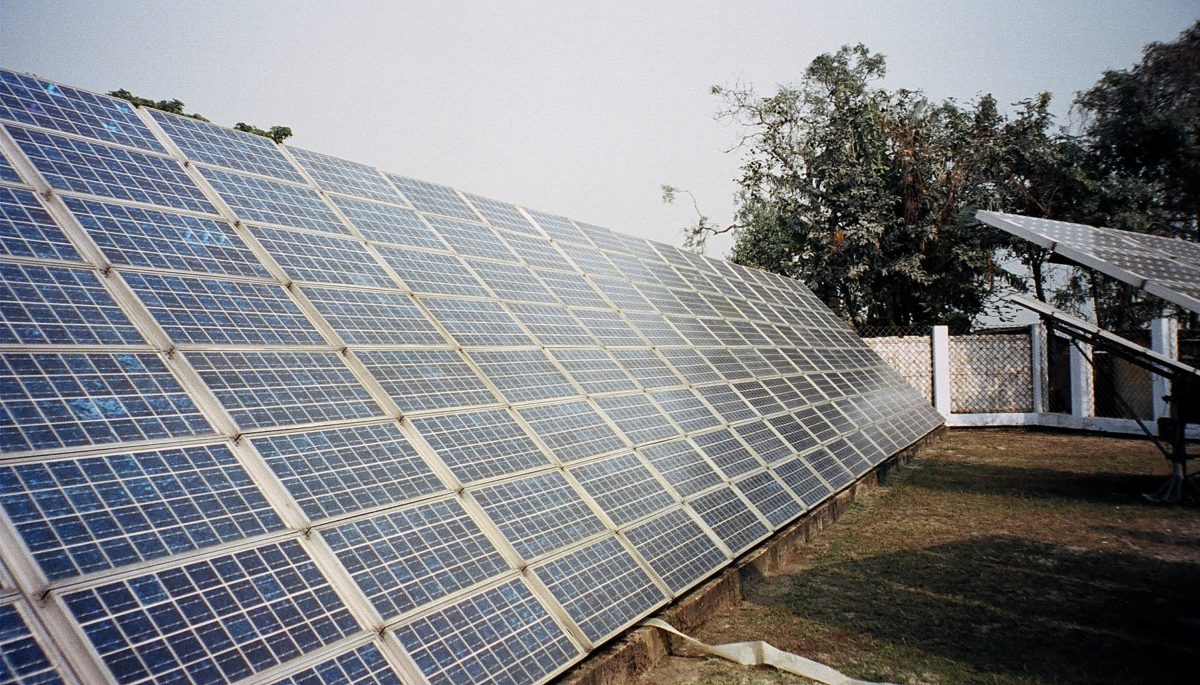Solar PV industry analysts and project developers in India feel that imposing a 25% safeguard duty on solar cells and modules from China and Malaysia will be a negative step in the overall goal for decarbonizing the energy sector in India, where tremendous progress has been made in the last four years.
Levying such duties will drastically affect solar power developers and capacity addition targets set by the government of India.
Solar cell/module manufacturing
Sangeetha Suresh, manager, Bridge to India, feels that since the duty period (two years) is very short, it will not encourage any new investment in setting up new solar capacity. By the time a manufacturer comes online, it will not be able to reap the benefits under safeguard duties. She also doubts gains for existing manufacturers on a sustainable basis.
Under present recommendations, it is completely unclear as to how domestic solar PV cells and module manufacturers are going to be protected. “Almost 70% of manufacturers are located in the special economic zone (SEZ) and the present findings have clearly mentioned that decision of applicability of safeguard duty on domestic SEZ units is out of their investigation purview and needs to be dealt by concerned authorities,” adds Shekhar Dutt, director general, Solar Power Developers Association.
Gyanesh Chaudhary, Vikram Solar MD and CEO, says, “If safeguard duty is imposed without exempting SEZ to domestic tariff area (DTA) removal, it will affect the domestic manufacturing industry adversely, as 3,825 MW out of 8,898 MW installed capacity for solar modules is based in SEZ and 2,000 MW out of 3,164 MW installed capacity for solar cells is based in SEZ.”
Solar project development
The duty will impact tariffs to the tune of 12-15%, which will be harmful for solar PV developers who have projects under execution, as they will face an immediate risk to the viability of their projects. Even cases where a specific change in law protection is available to developers, getting DISCOMs to negotiate and agree pass-through on extra cost will be an uphill battle, according to Sangeetha.
Shekhar Dutt adds, “The tariffs are likely to be increased by more than 50 paise/unit, pushing these beyond INR 3/unit considering the current average at 2.75 INR. It is very likely for DISCOMs to back out from signing the power sale agreements above 3 INR.”
Sujoy Ghosh, country head, First Solar, India, estimates 30-40 paise/kWh increase in electricity tariffs. “This would deter utilities to adopt renewable energy. Eventually, no one would benefit from this order if the demand shrinks, contrary to the recommendation being in public interest,” he says.
Imports from other countries
Imports from other countries are bound to happen to some extent, particularly as Chinese manufacturers have been setting up plants in different countries around the world to overcome such challenges. But manufacturing capacity in developing countries other than China and Malaysia is still very small. And since the duty is applicable for only two years, Sangeetha expects there would only be a marginal shift in the source of imports.
Suggestions
Sujoy Ghosh emphasizes that tariff barriers, such as safeguard duties have never helped any country in attracting investments into solar PV manufacturing. Rather, he suggests, the Indian government should consider a fresh look at the solar PV manufacturing policy, and implement policies to improve the competitiveness of the Indian manufacturing – by way of tax breaks and lower cost of capital – which can then attract new investments in this sector.
“Our immediate concerns are about thousands of MW whose import contracts are already tied up and deliveries are expected in coming months. The same should be excluded from impositions of any such duties,” says Shekhar Dutt.
Feeling that the imposition of safeguard duties in the current manner will make SEZ units uncompetitive and force them to shut their operations, Gyanesh Chaudhary recommends the government to exempt SEZ to DTA clearance of solar cells and modules from the ambit of safeguard duty.
Otherwise, it will lead to counterproductive results and destroy the domestic manufacturing industry, which is already in bad shape. The government should come out with a specific exemption by restricting safeguard duties imposition to input costs (which is subject to duties of safeguard) for all SEZ to DTA clearance, in order to accord equal protection to units in SEZ and DTA.
“The impending safeguard duty on imported panels goes against the principles of a market-driven pricing structure. The government’s intervention in curtailing imports will drive up the cost of solar installations. What India needs is a driving down of prices not artificially holding it up,” says Maxson Lewis, Magenta Power managing director.
“The safeguard duty will also cause Indian panel manufacturers to stay away from investing in improving their process and products. A safeguard only serves to maintain inefficiencies.”
“I would rather have an open playing field bereft of safeguard duties and also any subsidies. Both ways do more harm than good in a mature market,” Maxson Lewis concludes.
This content is protected by copyright and may not be reused. If you want to cooperate with us and would like to reuse some of our content, please contact: editors@pv-magazine.com.









By submitting this form you agree to pv magazine using your data for the purposes of publishing your comment.
Your personal data will only be disclosed or otherwise transmitted to third parties for the purposes of spam filtering or if this is necessary for technical maintenance of the website. Any other transfer to third parties will not take place unless this is justified on the basis of applicable data protection regulations or if pv magazine is legally obliged to do so.
You may revoke this consent at any time with effect for the future, in which case your personal data will be deleted immediately. Otherwise, your data will be deleted if pv magazine has processed your request or the purpose of data storage is fulfilled.
Further information on data privacy can be found in our Data Protection Policy.